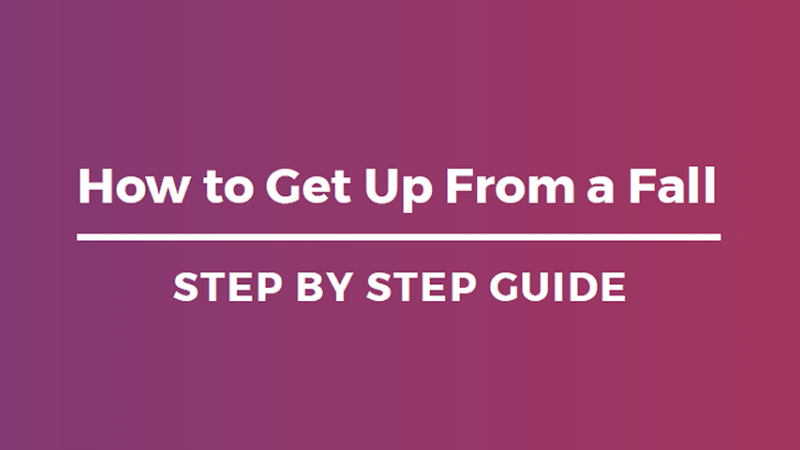Did you know that 1 in 4 older adults fall every year? Falling once doubles the risk of falling again. Getting help after an immobilizing fall improves the chance of survival by 80 percent and increases the likelihood of a return to independent living. If you fall, you should know the best and safest way to get up without risking further injury. Here is what you should do.
What to Do If You Fall
- Prepare yourself to get up: Try to stay calm. If you are unsure of the severity of your injuries, getting up too fast could make things worse.
- Survey your surroundings: Find the nearest piece of sturdy furniture. The bottom of a staircase may work, as well.
- Roll onto your side: Turn your head first, followed by your shoulders, arm, hips, and leg.
- Slowly raise yourself up: If you are not in front of the sturdy furniture or staircase, slowly crawl on your hands and knees so that you are.
- Place your hands on the furniture: Slide one foot forward so it is flat on the floor while keeping your other leg bent with your knee on the floor.
- Rise up slowly: Turn your body to sit in the chair.
- Sit: Sit for a few minutes and assess how you feel before attempting to move again.
If you’re unable to get up on your own, call for help by pushing your medical alert system help button. You’ll be connected to an emergency operator who will dispatch the type of help you need, immediately.
How to Help a Loved One Who Falls
- Prepare your loved one: Encourage them to stay calm and take a few deep breaths before proceeding.
- Evaluate Injuries: Take a quick look to see if your loved one sustained any bruises, sprains, or broken bones during their fall. If they have broken a bone or have any other serious injury do not attempt to move them and call 9-1-1. If they aren’t seriously injured and would like to proceed, continue.
- Assist them to a kneeling position: Help roll them onto their side, starting with the head, and help position them as necessary as they kneel. If they have stiff knees or knee pain, place a rolled towel under their knees for comfort and support.
- Position chairs: One in front of where your loved one is kneeling, and one behind for them to sit on.
- Move Slowly: Place both hands on the chair in front of them and to slide one foot forward so it is flat on the floor while keeping the other leg bent with their knee on the floor.
- Encourage your loved one: Slowly, encourage them to push themselves up on the first chair and then sit back in the second chair. Steady them, but try not to hold their full weight, as you may injure yourself during the process.
Safety Measures to Prevent Falls
- Remove fall hazards from your home—such as loose electrical cords and throw rugs.
- Create a check-in system with a family member, neighbor, or your local police station to ensure your safety every day.
- Keep any landline phones low on tables, rather than mounted high on the wall, for easy access if you should fall.
- Stay fit and active so your body can better respond to falls.
- Consider purchasing a medical alert system for 24/7 protection, security, and peace of mind.
Keep Your Muscles Strong
By focusing on muscles that will assist you in getting up from a fall, you’re taking preventative measures and will thank yourself later.
Forearms—Using a stress ball or spring grip can strengthen both your hands and forearms to help lift your body from a fall.
Triceps— Bodyweight tricep dips can be done safely on a chair by placing your arms behind you and on the chair’s surface. Scoot yourself off the edge of the chair and keep your knees bent. Slowly lower yourself down and push yourself back up for three sets of 10.
Calves— Calf raises require no equipment. Simply stand straight, lift one leg slightly off the floor, then lift yourself onto your toes on the foot that is still grounded. Repeat 10 times and switch legs.
Source: AgingCare.com | Chron | Homeability

